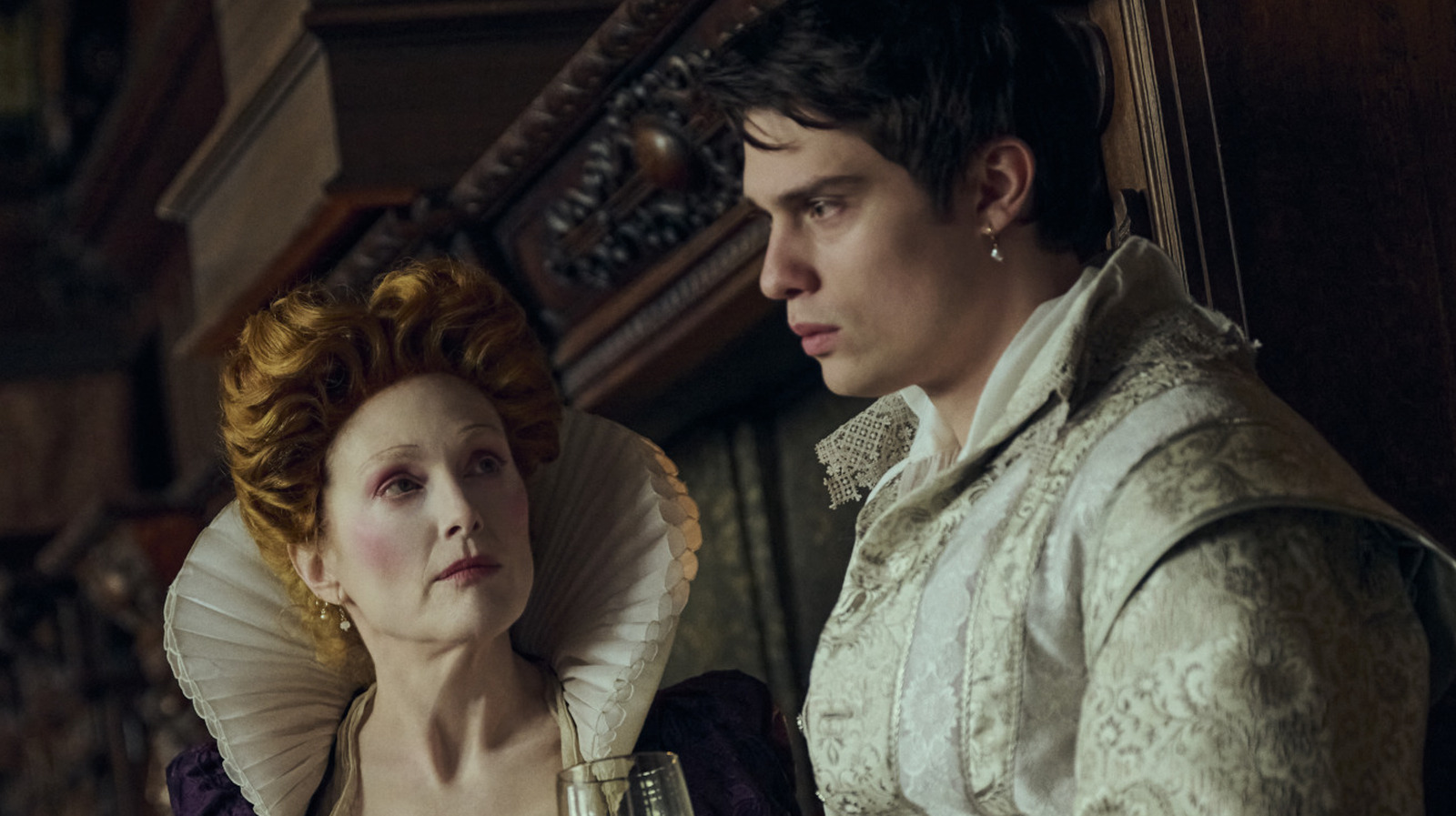
Starting on Starz in early 2024, the series “Mary & George” isn’t a comedy about a peculiar newlywed couple, but rather it tells the real-life tale of Mary Villiers and her son George, two commoners who managed to infiltrate the royal circle in England during the 17th century. In this show, we get to know George (played by Nicholas Galitzine, with complex feelings towards his gay roles) and follow his story as we delve into his challenging upbringing. We also see how Mary (portrayed by Julianne Moore) nurtures him, aiming to utilize him as part of a grand plan to amass wealth and power.
In an attempt to gain favor with King James I (Tony Curran), Mary devises a plan to win the monarch’s affection for George, understanding his inclination towards intimate relationships with his male advisors. To accomplish her goals, she must first eliminate the current king’s companion, the Earl of Somerset (Laurie Davidson). Additionally, she aims to have her son recognized by the royal court. However, she may need to employ more extreme tactics, leveraging her allure and instigating several assassination plots, to successfully carry out her intentions.
Is the portrayal of “Mary & George” in historical accounts truly accurate? The relationship between King James I and George Villiers has been a subject of debate for centuries, with some arguing it was romantic while others point to a lack of solid evidence for sexual involvement. As for Mary Villiers, the truth about her manipulative nature remains uncertain; contemporary reports and modern historians often disagree on the circumstances surrounding George’s rise from commoner to King’s favorite. Let’s separate fact from fiction and uncover the real story behind “Mary & George.
King James had a traumatic upbringing
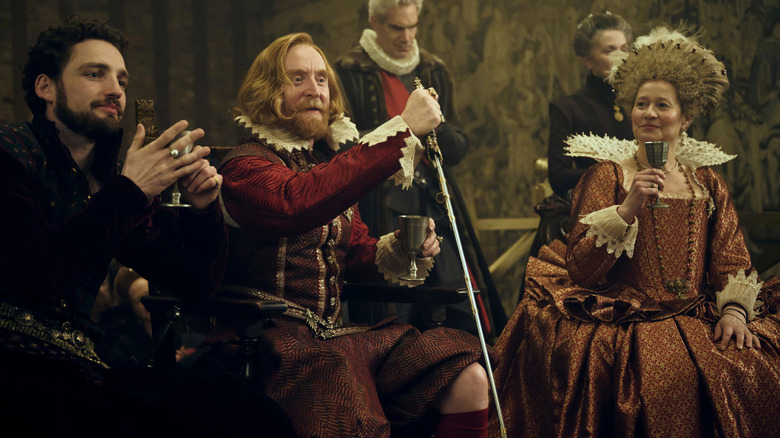
James may have sought such companionship due to a troubled childhood that left him yearning for male attention and support to help him cope and stabilize himself.
When James was just an infant, his father tragically fell victim to a murder plot. Shortly afterward, due to his mother’s abdication, he became King James at only 13 months old. Throughout his early years, he faced numerous assassination attempts and internal power struggles, which resulted in a constant changing of regents. One of his most trusted advisors, the Earl of Moray, was unfortunately ambushed on a roadside in 1570.
Given the many uncertainties and lack of reliable adult guidance, it’s not surprising that King James I relied heavily on male counselors he could depend upon. As a monarch, it’s understandable for him to promote those whom he found trustworthy to influential roles close to him, regardless of any romantic feelings involved.
Mary was a master manipulator of power
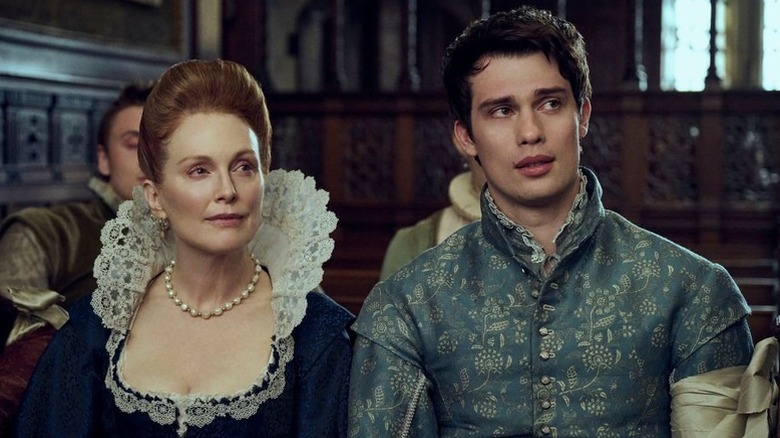
In the premiere of “Mary & George,” the young Villiers comes perilously close to taking his own life as a means to avoid his mother’s manipulative actions. Mary, driven by an insatiable desire for power and riches, uses her son as a pawn throughout the series. Eventually, she succeeds in her ambition: George forms a close bond with King James I and gains entry into his inner circle, with Mary being granted significant influence as well. This plotline closely mirrors historical events: King James held a deep-seated loyalty for the Villiers family, once proudly expressing (as detailed in “The Stuarts” by J.P. Kenyon) his intention to elevate them above all others.
Mary’s ambition to leverage her son for gaining influence at the King’s court wasn’t a casual idea or an impromptu scheme that came about by chance. Instead, it was something she had long been planning – using her children as tools to further her own objectives.
Faced with poverty, Mary could have worked towards bettering their situation through her eldest son. However, it was George, with his striking good looks, whom she believed held more potential for achieving her goals.
To provide George with the necessary polish for high society, Mary chose to marry again primarily for its financial advantages. Consequently, she could afford to send George to France where he learned dancing, manners, and a second language. This newfound sophistication, coupled with his striking appearance and athletic build, garnered attention during his initial meeting with the English king.
Did George and James have a romantic relationship?
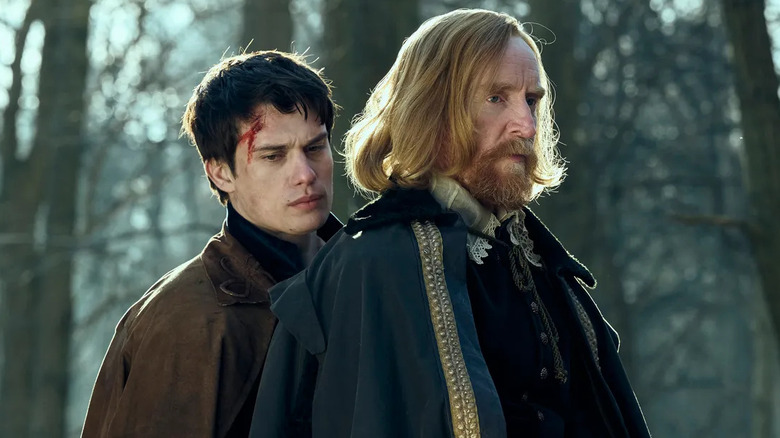
In contrast to how it’s shown in “Mary & George,” King James and George Villiers first met in a manner quite distinct from the opening episode. Unlike the series where King James visits George’s mother’s home, their initial encounter actually happened during a hunting expedition in Apethorpe, Northamptonshire, as depicted in the show’s second episode but portrayed as their second meeting there. At that time, George was part of the entourage accompanying Anthony Mildmay, the former ambassador to France, whose estate they used for the hunt.
At the meeting, King James found himself captivated (or enchanted) by Villiers, leading him to invite Villiers to serve as the Royal Cup bearer at court not long after. A strong friendship developed between them, and it wasn’t long before Villiers was frequently entertaining the King with his imaginative tales, sharp humor, and undeniably impressive dancing talent, bringing great pleasure to the monarch. Their bond went beyond a professional one, hinting at romantic feelings that were apparent.
It might seem unexpected, but their affection wasn’t exactly a hidden fact – it was more like an openly acknowledged secret since they were frequently seen kissing passionately in public. In fact, Francis Osborne, a contemporary observer, reportedly caught them in such an intense kiss that he speculated about what else could be happening privately. However, historians have been discussing for ages whether their relationship went beyond romantic love and included a sexual aspect, despite the obvious display of affection between them.
Mary schemed to discredit a woman into marrying her son
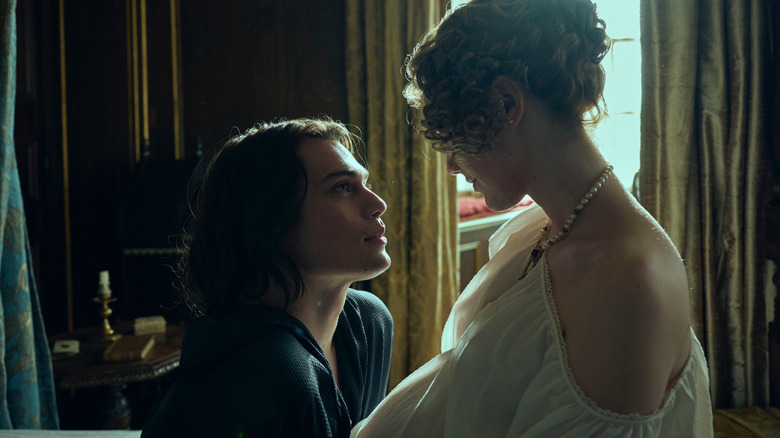
George Villiers experienced an extraordinary rise through the ranks in royal circles, moving swiftly from a commoner to a servant, then to a court advisor, eventually becoming the Duke of Buckingham within a few brief years. However, it wasn’t just George who profited from his rapid ascension; as his mother had strategized, she too managed to insinuate herself into the king’s close circle. James eventually began treating her with similar favor, even bestowing upon her positions and influence in the English court. Eventually, she was made the Countess of Buckingham.
Despite possessing a title, Mary was far from satisfied with just basking in the success of her endeavors. According to certain historians, she devised another plan to amass more power and influence, this time by seeking a suitable bride for her son. Her choice was Lady Katherine Manners, portrayed by Mirren Mack in “The Witcher: Blood Origin,” a wealthy noblewoman and heiress. To the common observer, this may have appeared as a typical royal courtship; however, some of their contemporaries speculated that Mary manipulated Katherine into marrying George. It is said that Mary coerced Katherine to spend a night with her son, potentially causing a scandal if she did not marry him.
Mary’s meticulous selection of individuals in her family circle also included the monarch, lasting till his demise. Notably, during King James’ severe illness in 1625, Mary engaged in debates with physicians regarding the most appropriate course of treatment for him.
George remained a powerful but reviled figure for years

In the gripping finale of “Mary & George,” it’s portrayed as if the younger Villiers took the life of the King, dismissing their love as insignificant. However, history paints a different picture. King James, in reality, passed away in 1625 following a prolonged battle with various illnesses such as malarial fever, dysentery, and ultimately a stroke. Some scholars have proposed the intriguing theory that George may have poisoned him, but these ideas are largely debunked today, although they were widely believed back then. As a dedicated history enthusiast, I find this misrepresentation intriguing to explore.
After King James’ demise, George still wielded power within the royal court as Charles took over the throne, serving as a trusted advisor to King Charles I much like he did for his father. However, George was not well-regarded, especially by the public who saw him as a disreputable character. His fate came at the hand of assassin John Felton, who believed he was benefiting the nation in taking his life. Upon his death, there were no tears shed, and even celebrations erupted throughout London. In fact, Villiers’ funeral had to be held under the cloak of night due to his unpopularity stemming from his war-mongering ways.
Read More
- Pi Network (PI) Price Prediction for 2025
- USD CNY PREDICTION
- Gold Rate Forecast
- 10 Most Anticipated Anime of 2025
- Silver Rate Forecast
- USD MXN PREDICTION
- EUR CNY PREDICTION
- USD JPY PREDICTION
- Brent Oil Forecast
- Capcom has revealed the full Monster Hunter Wilds version 1.011 update patch notes
2025-04-15 23:30